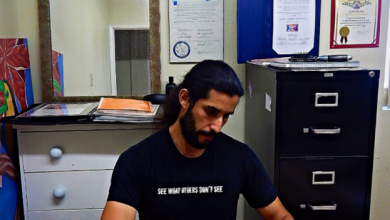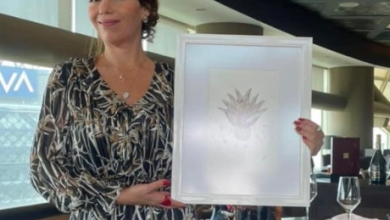Horacio Cardenas

Originario de la Ciudad de México, desde muy temprana edad siente inclinación por las artes, estudio arquitectura donde comienza a experimentar por sí mismo con diferentes técnicas y materiales, su obra es dinámica y produce la necesidad de profundizar en el mensaje del artista. Su trayectoria cuenta con cerca de 400 exposiciones, la mayoría individuales, con una peculiar propuesta estética, primero con la fibra de Henequén y ahora con la técnica que él denomina Estucos, yeso sobre una base de metal y laca texturizada, con el tema del amor en sus diferentes colecciones de “Amor Arbóreo”
En el año 2003, obtiene el premio de “3ª. Muestra de Creatividad” de Cancún. Recibió en el 2004 la beca Pacmyc. Seleccionado para La Bienal del Sureste Joaquín Claussel 2005, Campeche, México y la Bienal Internacional de Artes Plásticas Costa Rica también en el 2005. En el 2009 el ACCESIT del certamen de Pintura Tenerife-Siglo XXI Arte Contemporáneo en Puerto de Santiago del Teide, Tenerife, España. En el 2010 el Premio Especial del Jurado en el certamen de pintura Tenerife-Siglo XXI Santa Cruz de Tenerife, España. En el 2011 el 1er lugar del certamen de pintura Tenerife-Siglo XXI, España. Sus trabajos se encuentran en colecciones particulares en Alemania, Argentina, Canadá, Chile, Estados Unidos, Irlanda, Italia, México, Noruega, entre otros.
Es también autor de dos libros, el Libro de Reflexión, editado por RG Distribución en México, y 100 para vivir al 100, de la editorial Pasión por los Libros, Valencia, España. Inició en conjunto a los artistas Silvia Sol y Josef María, la tendencia plástica denominada ESENCIALISMO. Seleccionado como el Artista más destacado del Caribe Mexicano por la Revista Brújula, mediante encuesta abierta al público. En el 2015 presenta en el Senado de La Republico de México la nueva colección de Estucos. Horacio Cardenas ha desarrollado un estilo personal que busca proyectar su idea humanista del mundo en ideogramas escultóricos de colores intensos que él llama “Metáforas Plásticas” y que procuran proporcionar la reflexión en el espectador.

Originally from Mexico City, from an early age he felt an inclination to arts, he studies architecture and began to experience with different techniques and materials on his own, his work is dynamic and produces the need to deepen in the message of the artist. His career counts with almost 400 exhibitions, most individual, with a peculiar aesthetics proposal, firstly with sisal fibers and now with the technique that he called stuccoes, plaster on a metal base and lacquer texture, with love theme in its different collections of “Arboreal Love”.
In 2003 he won the «3rd. «Displays of Creativity» in Cancun. In 2004 he received the Pacmyc scholarship. He was selected for the Biennial Southeast Joaquin Claussel 2005 in Campeche, Mexico, and the International Biennial of Plastic Arts Costa Rica also in 2005. In 2009 he won the second prize of the Painting Competition Tenerife-Century XXI Contemporary Art in Puerto de Santiago del Teide, in Tenerife, Spain. In 2010 the Special Jury Prize in the painting competition Tenerife- Century XXI Santa Cruz de Tenerife, Spain. In 2011 the 1st place of the painting competition Tenerife-Century XXI, in Spain. His works are in private collections in Germany, Argentina, Chile, United States, Ireland, Italy, Mexico and Norway, among others.
He is also the author of two books, The Book of reflection, edited by RG distribution in Mexico, and 100 to live at 100, by the editorial Passion for books, Valencia, Spain. He started in conjunction with the artists Silvia Sol and Josef Maria, a plastic trend called ESSENTIALISM. Selected as the most prominent Mexican Caribbean artist, by the Brújula magazine, through a survey open to the public. In 2015 he presented at the Senate of the Republic of Mexico the new Stucco collection. Horacio Cárdenas has developed a personal style that seeks to project his humanist idea of the world in sculptural ideograms of intense colors that he calls «Plastic Metaphors», which seek to provide inner thoughts in the viewer.








